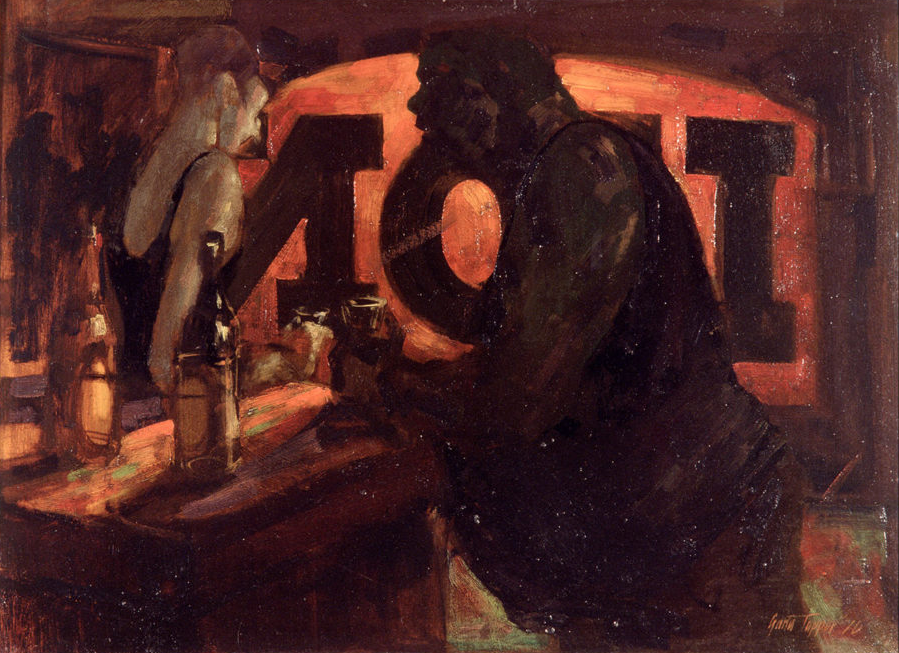ARTISTS Laurence Aberhart, Leslie Adkin, S.P. Andrew, Rita Angus, W. Beattie, William Blomfield, Max Bollinger, Eymard Bradley, Brian Brake, Mary-Louise Browne and Frank Stark, Gordon Burt, Alfred Burton, Glenn Busch, Fiona Clark, Russell Clark, I.V. Clarkson, Neville Colvin, Bruce Connew, David Cooke, Walter Crane, Tim Croucher and Richard Fahey, Tim De Goldi, Frank Dromgoole, Judy Evans and Guy Harding, Vanguard Films, Bruce Foster, Dick Frizzell, Len Gale, Jack Gilmour, Rudi Gopas, Sally Griffen, C. Hale, Gil Hanly, Malcolm Harrison, Kennaway Henderson, Cecil Holmes, Glen Jowitt, Dennis Knight Turner, Darcy Lange, John Le Cen, Trevor Lloyd. Neville Lodge, Vivian Lynn, I. McAnally, J. McDonald, Leonard Mitchell, Sharon Murdoch, James Nairn, Jan Nauta, Ann Noble, Denis O’Conor, F. O’Leary, Deane Parker and Francis Weavers, John Pascoe, Albert Percy Godber, Christopher Perkins, Gerd Pohlmann, Phil Rooke, Harry Rose, Geoffrey Short, S.C. Smith, Garth Tapper, Mervyn Taylor, Ngapine Tamihana Te Ao, William Tighe, Paul Tozer, Warren Viscoe, Richard Watson, Stephano Webb, John Weeks, Ans Westra, Lois White, Robin White, George Woods, Adele Younghusband CURATORS Gregory Burke and Ann Calhoun SPONSORS Union Shipping Company, New Zealand Stevedoring Company Limited OTHER VENUES Auckland Art Gallery, 18 April–26 May 1991; Govett-Brewster Art Gallery, New Plymouth, 8 June–14 July 1991; Manawatu Art Gallery, 4 October–24 November 1991; Robert McDougall Art Gallery, 1 February–8 March 1992; Dunedin Public Art Gallery, 28 March–17 May 1992 PUBLICATION essays Athol McCredie, Herbert Roth, Peter and Diane Beatson, Robert Taylor, Russell Campbell, Peter Ads, Ann Calhoun
Art and Organised Labour marks the centenary of the 1890 maritime strike—the beginning of the New Zealand trades-union movement. The show explores the movement, working-class identity, and the representation of workers. It includes paintings and drawings, banners and posters, photos and films, badges and cartoons. It is organised with guidance from the Trade Union Education Authority and the Trade Union History Project. Pasted in block letters on the gallery floor, an introductory chant proclaims 'Now marshals start the music; Let the banners be unfurled: “Eight hours” shall be our motto; Eight hours throughout the world.'
The show challenges the expectations of some. A Public Association Journal review claims: ‘If a visit to the Art Gallery conjures up rows of gilt-edged frames containing princes and potentates, or abstracts that look like the kids have been out with the felt-tip pens then it’s time to think again … It’s different, it's important, it’s fun, and most importantly, it’s about people we all know and are.’
A collection of union banners introduces the show. Some are homemade, others produced by sign writers. The most recent is Malcolm Harrison's for the Hospital and Restaurant Workers Union, made to commemorate 1990 International Workers Day. It's a bright patchwork, with silhouetted heads with speech bubbles proclaiming 'We shall overcome', 'May Day is celebration day', 'Divided we fall', and 'Honk if you’re gay'.
Murals were once a mouthpiece for the movement. Judy Evans and Guy Harding's Unity Centre Mural, made for the Communist Party during World War II, is reproduced from lantern slides. It features slogans, such as 'Marx and Engels show the way ...', 'Lenin led the way to unity…', and 'Then comrades to communism …'. In the 1940s, Dennis Knight Turner made five murals for the movement, depicting working-class occupations: Labourers, Transport Workers, Carpenters and Builders, and Engineers. In the central panel, a strapping blond man brandishes a red flag bearing the word ‘Unity’.
Curator Gregory Burke says his show 'encourages a consideration of the visibility of working life within mainstream visual culture in general, as well as the exclusion and marginalisation of sections of society within the visual history of work in this country'. To rectify this, Māori and women are emphasised.
Photos, from as early as the 1920s, show Māori engaged in cooking, fishing, carving, weaving, shearing, and agriculture. Ngapine Tamihana Te Ao's commissioned photo essay, Taonga Tuku Iho (The Gifts that Are Handed On) shows preparations for a hui at Omahu Marae, Hastings, highlighting Māori collectivist community values.
The place of women is key. Photos show women working in various industries during the World Wars, from seamstresses to nurses to manual labourers. Vivian Lynn's medal-like banner, Honour, Duty, Sacrifice (1970), confronts the prevailing position of women in New Zealand society. The inclusion of Robin White’s print, Mere and Siulolovao, a poster for the 1979 United Women’s Convention, promotes childcare as unpaid work. Other posters demand recognition of childcare as work and the right to parental leave.
The hand is a symbol of labour. It appears throughout the show: in a cartoon, in banners, photos, a postage stamp, a dinner invitation, and the raised-hammer logo of the Federation of Labour. Mary-Louise Browne and Frank Stark's commissioned photo-mural triptych, The Division of Labour (1990), features a male and a female hand wrestling, clasped, and in prayer—addressing the gendered workplace.
Painters Rita Angus, Dick Frizzell, Garth Tapper, and William Tighe, and sculptor Warren Viscoe represent workers as subjects. A Darcy Lange video documents a freezing works, showing the boning of beef, a beef conveyor belt, a mutton chain, as well as skinning, gutting, and stomach removal. Screening daily, documentary films include Coal from Westland (1943), produced by the National Film Unit, and Shattered Dreams (1990), on the 1951 waterfront dispute, produced by the Trade Union History Project.
The exhibition tours the country for two years. In 1991, the new National government passes the Employment Contracts Act, ending compulsory unionism.












































































































































